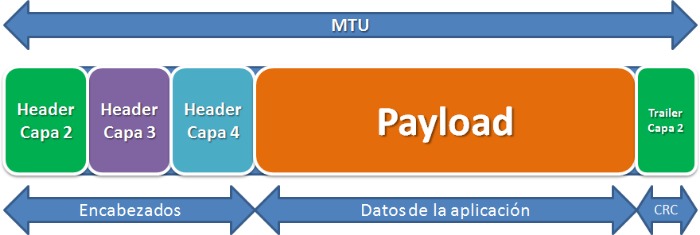Overview of Business Technology and Communications
Business technology and communications play a crucial role in the modern corporate landscape, enabling organizations to operate efficiently and stay competitive in a rapidly evolving digital world. By integrating various technological tools and communication methods, businesses can streamline processes, enhance collaboration, and reach their target audiences more effectively. Understanding the fundamentals of these areas is essential for leveraging their full potential and achieving sustained success.
Definition and Scope
Business technology and communications refer to the tools, systems, and processes that facilitate effective information exchange and operational efficiency within organizations. They encompass a wide range of hardware, software, networks, and communication channels that support business activities and strategic objectives.
The scope of business technology and communications includes the implementation and management of information technology systems, enterprise communication networks, data management solutions, and collaboration platforms. It also involves leveraging emerging technologies such as cloud computing, cybersecurity, and digital transformation to enhance productivity and competitive advantage.
Overall, this field plays a crucial role in enabling real-time communication, data sharing, and decision-making across different levels of an organization, fostering innovation and ensuring seamless coordination within the modern business environment.
Importance in Modern Business
Business technology and communications play a crucial role in shaping the landscape of modern organizations. They encompass a wide range of tools and systems that facilitate efficient information exchange, streamline operations, and enhance decision-making processes. Effective communication channels and advanced technological solutions enable businesses to stay competitive and responsive to market demands.
In today’s digital era, the importance of business technology and communications cannot be overstated. They support collaboration across different locations, improve customer engagement, and enable real-time data sharing. This technological integration helps organizations reduce costs, increase productivity, and innovate continuously, ensuring long-term success in an increasingly interconnected world.
Key Components of Business Technology
Business technology plays a vital role in enhancing communication and operational efficiency within organizations. Key components of business technology include hardware, software, networks, and security systems that work together to support seamless information exchange. Understanding these elements is essential for businesses to stay competitive and adapt to the rapidly evolving digital landscape.
Hardware Infrastructure
Hardware infrastructure is a fundamental element of business technology and communications, enabling organizations to support their operational needs efficiently. It provides the physical foundation for deploying software applications, managing data, and facilitating communication within and outside the organization.
- Servers: Centralized systems that store, process, and manage data, hosting applications, and services essential for business operations.
- Networking Equipment: Devices such as routers, switches, and firewalls that facilitate connectivity, data transfer, and secure communication across the organization.
- Workstations and Devices: Computers, mobile devices, and peripherals used by employees to perform their daily tasks and access organizational resources.
- Storage Solutions: Hardware like SANs, NAS devices, or external drives that provide reliable data storage, backup, and recovery options.
- Communication Hardware: Equipment such as VoIP phones, videoconferencing systems, and signal amplifiers that support effective communication channels.
Software Solutions
Key components of business technology and software solutions play a vital role in enhancing communication and operational efficiency within organizations. These include enterprise resource planning (ERP) systems that integrate core business processes, customer relationship management (CRM) platforms to improve client interactions, and collaboration tools that facilitate seamless communication among team members. Additionally, cloud computing services enable scalability and remote access, while data analytics tools support informed decision-making. Security solutions ensure the protection of sensitive information, and automated workflows streamline repetitive tasks, ultimately driving productivity and business growth in the digital age.
Cloud Computing and Storage
Business technology and communications mtu encompass essential elements that enable organizations to operate efficiently, securely, and competitively in the digital age. Understanding the key components of these areas helps businesses optimize their resources and streamline their processes.
Key Components of Business Technology and Communications MTU
- Hardware Infrastructure: Includes servers, networks, computers, and communication devices that form the backbone of business operations.
- Software Solutions: Enterprise applications, communication platforms, and management systems that facilitate business processes and collaboration.
- Network Connectivity: Reliable internet connections, VPNs, and intranet systems that support seamless communication and data transfer.
- Cloud Computing: On-demand virtual resources, cloud platforms, and services that provide scalability, flexibility, and cost efficiency.
- Data Storage: Cloud-based and on-premises storage solutions that ensure data availability, security, and easy access.
- Security Measures: Firewalls, encryption, and cybersecurity protocols that protect business data and communication channels.
- Integration and APIs: Systems that enable interoperability between different applications and platforms for cohesive operations.
Networking Technologies
Business technology and communications are essential for modern organizations to operate efficiently and competitively. Key components include hardware such as servers, computers, and networking devices that form the foundation of technological infrastructure. Software solutions like enterprise applications, communication platforms, and cybersecurity tools enable seamless operations and secure data management. Networking technologies are crucial for connecting systems and users, featuring wired and wireless networks, routers, switches, and firewalls that facilitate reliable communication. Additionally, cloud computing services allow businesses to access resources and data remotely, enhancing flexibility and scalability. Effective integration of these components ensures smooth business processes, improved collaboration, and better decision-making, which are vital for success in today’s digital landscape.
Effective Business Communications
Effective business communications are essential for the success of any organization, especially in the rapidly evolving field of business technology. Clear and efficient communication ensures that teams work seamlessly, decisions are well-informed, and goals are achieved. In the context of business technology and communications mtu, mastering the art of conveying complex technical information in a comprehensible manner is crucial for fostering innovation and maintaining competitive advantage.
Internal Communication Tools
Effective internal communication tools are essential for fostering collaboration, enhancing productivity, and ensuring that organizational goals are clearly conveyed within a business. In the realm of business technology and communications, leveraging the right tools can significantly improve the flow of information across different departments and teams.
- Instant Messaging Platforms: Tools like Slack or Microsoft Teams facilitate real-time communication, allowing quick exchanges of information and reducing email overload.
- Video Conferencing Software: Zoom, Google Meet, and similar platforms enable face-to-face meetings regardless of geographic location, supporting remote work and virtual collaborations.
- Internal Email Systems: Reliable email services remain fundamental for formal communication, documentation, and detailed information sharing.
- Intranet Portals: Centralized platforms where employees can access company news, policies, and resources, fostering transparency and engagement.
- Task Management Tools: Applications like Asana, Trello, or Jira help in tracking projects, assigning tasks, and managing deadlines effectively.
- Integration of Communication Tools: Combining various tools ensures seamless information flow and minimizes communication gaps.
- Security and Privacy: Ensuring that internal communications are protected from unauthorized access maintains confidentiality and trust.
- User Training: Regular training sessions help employees utilize communication tools efficiently and promote best practices.
- Feedback Mechanisms: Implementing channels for feedback enhances communication quality and addresses internal issues promptly.
External Communication Channels
External communication channels are vital for businesses to maintain effective relationships with clients, suppliers, stakeholders, and the public. In the context of business technology and communications, these channels include various digital and traditional methods that facilitate the exchange of information beyond the organization’s internal environment. Utilizing technology such as email, social media platforms, company websites, and video conferencing enables businesses to communicate efficiently and promptly on a global scale. These channels help in building trust, enhancing brand reputation, and ensuring clear, consistent messaging to external audiences. Choosing the appropriate channels depends on the target audience, the nature of the message, and the business objectives. Incorporating advanced communication tools and strategies can significantly improve customer engagement, support sales efforts, and foster partnerships in today’s digital landscape.
Importance of Real-Time Communication
Effective business communications are essential for the success and growth of any organization. Clear and concise messaging ensures that all stakeholders are aligned and can work collaboratively towards common goals. In the context of business technology, seamless communication tools facilitate this process, enabling faster decision-making and problem-solving.
The importance of real-time communication in business cannot be overstated. It allows immediate exchange of information, which minimizes misunderstandings and delays. Real-time communication methods such as instant messaging, video conferencing, and live chat support are vital in today’s fast-paced corporate environment, helping teams stay connected regardless of geographical distances. This immediacy fosters a more responsive, agile, and efficient business operation, ultimately enhancing productivity and customer satisfaction.
Emerging Technologies in Business Communication
Emerging technologies are transforming the landscape of business communication, enabling companies to connect more efficiently and effectively. Innovations such as artificial intelligence, virtual reality, and 5G networks are revolutionizing how organizations collaborate internally and engage with their clients. This article explores the impact of these technological advancements on business communication and the future they are shaping in the realm of business technology and communication.
Artificial Intelligence and Chatbots
Emerging technologies are revolutionizing business communication by enhancing efficiency and engagement. Artificial Intelligence (AI) plays a pivotal role in this transformation, enabling companies to analyze data, personalize interactions, and streamline operations. Chatbots, powered by AI, are increasingly used to provide instant customer support, automate routine tasks, and facilitate 24/7 communication. These technologies improve response times, reduce operational costs, and create seamless communication channels between businesses and their clients. As AI and chatbots continue to evolve, they are set to become even more sophisticated, fostering smarter, more responsive business environments that cater to the dynamic needs of modern markets.
Video Conferencing and Virtual Collaboration
Emerging technologies in business communication are revolutionizing how organizations connect and collaborate across the globe. Video conferencing tools have become essential, enabling real-time face-to-face interactions regardless of geographical barriers. Virtual collaboration platforms facilitate seamless teamwork by integrating chat, file sharing, and project management features, fostering productivity and innovation. Advancements such as AI-powered transcription, virtual backgrounds, and high-definition video enhance user experience, making remote communication more natural and efficient. These technologies are transforming traditional business practices, allowing for more flexible, cost-effective, and dynamic work environments essential for modern enterprise success.
Unified Communications Platforms
Emerging technologies in business communication are transforming the way organizations connect, collaborate, and operate in the modern marketplace. One of the most significant developments is the rise of unified communications platforms, which integrate various communication tools such as voice, video, messaging, and conferencing into a single, seamless interface. These platforms enhance efficiency by allowing employees to switch effortlessly between different modes of communication, regardless of their location or device. As businesses increasingly adopt these innovative solutions, they benefit from improved collaboration, faster decision-making, and a more cohesive corporate culture, all of which are crucial for maintaining a competitive edge in today’s digital economy.
Security and Privacy in Business Technology
Security and privacy are vital components of business technology and communications, ensuring that sensitive information remains protected from threats and unauthorized access. As businesses increasingly rely on digital platforms and interconnected systems, safeguarding data and maintaining user trust become essential for operational success and compliance. Effective security measures help organizations mitigate risks, while strong privacy practices foster secure and confident communication within and outside the business environment.
Data Encryption and Security Protocols
Security and privacy are critical components in business technology and communications management. Protecting sensitive business data and maintaining customer trust depend on implementing robust security measures, including data encryption and security protocols, to prevent unauthorized access and data breaches. Ensuring these safeguards are in place helps businesses operate securely in an increasingly digital world.
- Data Encryption: Encryption transforms readable data into an unreadable format using algorithms, making it inaccessible to unauthorized users. This is vital for safeguarding confidential information during transmission and storage.
- Security Protocols: Protocols such as SSL/TLS, IPsec, and VPNs establish secure communication channels, ensuring data integrity and confidentiality over networks.
- Access Controls: Implementing strong authentication and authorization mechanisms restricts access to sensitive information, reducing risks of internal and external threats.
- Regular Security Audits: Conducting audits and vulnerability assessments identifies potential security gaps, enabling timely mitigation measures.
- Employee Training: Educating employees on security best practices helps prevent human errors that could lead to security breaches.
Cybersecurity Challenges
Security and privacy in business technology are critical considerations as organizations increasingly rely on digital platforms for communication and operations. Protecting sensitive data from unauthorized access and ensuring compliance with privacy regulations are essential to maintaining trust and integrity. Cybersecurity challenges include evolving threats such as malware, phishing, ransomware, and insider threats that can disrupt business functions and lead to significant financial losses.
Effective cybersecurity measures require continuous monitoring, robust encryption practices, and comprehensive employee training to recognize and mitigate potential threats. Businesses must also implement strong access controls and regularly update their security infrastructure to defend against emerging vulnerabilities. As communication methods evolve, securing data transmission and maintaining the confidentiality of business communications become even more vital to prevent data breaches and ensure secure, reliable interactions in the digital age.
Compliance and Regulatory Requirements
Security and privacy are critical components in business technology and communications, especially regarding the management of data and digital interactions. Ensuring the confidentiality, integrity, and availability of information helps protect organizations from cyber threats and unauthorized access. Businesses must implement robust security measures such as encryption, firewalls, and access controls to safeguard sensitive data and maintain customer trust.
Compliance with regulatory requirements is essential in maintaining legal and ethical standards within business technology. Organizations are often subject to laws such as GDPR, HIPAA, and PCI DSS, which mandate specific protections for data handling and privacy practices. Adhering to these regulations not only prevents legal penalties but also enhances the company’s reputation and customer confidence.
In the domain of business technology and communications, establishing clear policies, regular audits, and employee training are vital steps. These practices ensure that businesses remain compliant with evolving regulations and maintain a high standard of security and privacy, ultimately supporting sustainable growth and trustworthy operations.
Strategies for Integrating Business Technology and Communications
Effective integration of business technology and communications is essential for organizations aiming to enhance productivity, streamline operations, and foster better collaboration. By leveraging advanced tools and systems, companies can facilitate seamless information flow and improve decision-making processes. Understanding key strategies for merging technology with communication channels is crucial in creating a cohesive and agile business environment.
Assessment of Business Needs
Effective integration of business technology and communications requires a thorough assessment of the organization’s needs to ensure alignment with strategic goals. This process involves identifying key areas where technology can enhance communication flows, improve efficiency, and support business growth. Conducting a comprehensive needs analysis helps organizations determine the most suitable tools, platforms, and systems to implement. It also involves evaluating current infrastructure, workflows, and user requirements to pinpoint gaps and opportunities. By understanding these needs, businesses can make informed decisions that optimize communication channels, foster collaboration, and leverage technological advancements for competitive advantage.
Implementation Roadmap
Integrating business technology and communications is crucial for enhancing operational efficiency and fostering seamless collaboration within organizations. A well-structured implementation roadmap ensures that integration efforts are systematic, aligned with business goals, and adaptable to change. Key strategies include conducting a thorough needs assessment, selecting scalable and compatible technological solutions, and fostering a culture of innovation and continuous improvement. Establishing clear communication channels and providing comprehensive training are vital to facilitate user adoption and minimize resistance. Moreover, leveraging project management best practices and setting measurable milestones helps track progress and ensure timely deployment. Regular evaluation and feedback loops enable organizations to refine their technology integration, thereby maximizing ROI and maintaining a competitive edge in today’s dynamic business environment.
Training and Change Management
Integrating business technology and communications effectively requires a strategic approach that aligns technological advancements with organizational goals. This involves establishing clear communication channels, fostering collaboration among departments, and leveraging technology to enhance information sharing. Training plays a crucial role in ensuring that employees are proficient in new systems, promoting smoother adoption and reducing resistance to change. Change management strategies should focus on engaging stakeholders early, providing continuous support, and addressing concerns to facilitate a seamless transition. Combining these elements creates an environment where business technology enhances operational efficiency, drives innovation, and supports sustainable growth.
Benefits of Advanced Business Technology and Communications

Advanced business technology and communications play a vital role in driving efficiency, fostering innovation, and enhancing connectivity within organizations. By leveraging cutting-edge tools and systems, businesses can streamline operations, improve collaboration, and gain a competitive edge in today’s fast-paced digital landscape. Embracing these advancements enables companies to adapt quickly to market changes and meet the evolving needs of their customers.
Increased Productivity
Advanced business technology and communications play a crucial role in boosting productivity within organizations. By leveraging the latest tools and systems, companies can streamline their operations, improve communication efficiency, and foster a more collaborative work environment.
- Enhanced Collaboration: Modern communication platforms enable real-time messaging, video conferencing, and file sharing, making it easier for teams to work together regardless of location.
- Automation of Routine Tasks: Advanced technology automates repetitive processes, freeing up employees’ time to focus on strategic initiatives.
- Faster Decision-Making: Access to real-time data and analytics facilitates quicker and more informed business decisions.
- Improved Customer Service: Advanced communication tools allow for immediate response to customer inquiries, resulting in higher satisfaction and loyalty.
- Greater Flexibility and Remote Work Capabilities: Cloud-based solutions support remote work arrangements, increasing flexibility and productivity for employees.
- Reduced Downtime and Efficient Workflow: Reliable technology minimizes technical issues and ensures smooth business operations, minimizing downtime and delays.
Enhanced Collaboration
Advanced business technology and communications significantly enhance collaboration within organizations, leading to improved efficiency and productivity. By leveraging cutting-edge tools such as unified communication systems, cloud computing, and real-time messaging, teams can connect effortlessly regardless of geographical barriers. This fosters a more agile work environment where information sharing is seamless and timely. Additionally, these innovations facilitate better project management through integrated platforms that streamline workflows and ensure everyone stays aligned on goals. Overall, adopting advanced business technology and communication solutions empowers businesses to operate more effectively, making them more competitive in today’s dynamic market landscape.
Competitive Advantage
Advanced business technology and communications play a crucial role in establishing and maintaining a competitive advantage in today’s dynamic marketplace. They enable companies to operate more efficiently, innovate faster, and connect more effectively with clients and partners.
- Improved Efficiency: Streamlining processes and automating repetitive tasks reduce operational costs and save time.
- Enhanced Communication: Advanced communication tools facilitate seamless collaboration within teams and with external stakeholders.
- Innovation Opportunities: Cutting-edge technology fosters innovation by providing new ways to deliver products and services.
- Better Data Management: Advanced systems enable real-time data analysis, supporting informed decision-making.
- Customer Engagement: Improved communication channels help businesses build stronger relationships with customers, boosting loyalty.
- Scalability: Technology solutions can easily scale to meet growing business demands, ensuring sustained competitiveness.
- Market Differentiation: Leveraging innovative technology sets a company apart from competitors.
- Operational Agility: Quickly adapting to market changes and customer needs becomes possible with advanced communication systems.
- Cost Savings: Automation and improved process management reduce expenses, increasing profit margins.
- Global Reach: Modern technology enables businesses to expand their reach internationally with ease.
- Enhanced Security: Advanced cybersecurity measures protect sensitive information, maintaining trust and compliance.
Future Trends in Business Technology and Communications
The landscape of business technology and communications is constantly evolving, driven by rapid advancements in digital innovation. As organizations seek more efficient and secure ways to connect, collaborate, and operate, emerging trends are reshaping the way businesses interact internally and with their customers. Staying ahead of these developments is crucial for companies aiming to maintain a competitive edge in the modern marketplace.
Automation and AI Integration
Future trends in business technology and communications are increasingly centered around the integration of automation and artificial intelligence, transforming how organizations operate and engage with their audiences. As companies continue to adopt advanced AI systems, they will enhance decision-making processes, improve customer interactions, and streamline internal workflows. Automation tools will become more sophisticated, enabling businesses to handle repetitive tasks efficiently and reduce human error, leading to higher productivity and cost savings. Furthermore, the rise of intelligent communication platforms will facilitate seamless, real-time collaboration across global teams, fostering innovation and agility. With these advancements, businesses will be better positioned to adapt quickly to market changes and meet evolving customer expectations, paving the way for a more connected, efficient, and responsive corporate environment.
5G and Improved Connectivity
Future trends in business technology and communications are poised to revolutionize how companies operate and connect with their clients. Among these developments, 5G technology stands out as a game-changer, offering significantly faster and more reliable internet connections. This advancement will enable real-time data sharing, seamless video conferencing, and enhanced cloud-based services, greatly improving overall efficiency and productivity. Improved connectivity will also support the growth of Internet of Things (IoT) devices, leading to smarter workplaces with automated systems and better resource management. As businesses adopt these innovations, they will experience greater agility, better customer engagement, and a competitive edge in their industries, marking a new era of digital transformation.
IoT and Smart Business Environments
Future trends in business technology and communications are poised to revolutionize the way organizations operate, making processes more efficient, data-driven, and interconnected. The Internet of Things (IoT) will continue to expand, embedding sensors and devices into everyday business environments to enable real-time data collection and analysis. Smart business environments will leverage IoT to optimize resource management, enhance customer experiences, and improve decision-making processes. Artificial intelligence and machine learning will become integral components, automating tasks and providing predictive insights that drive strategic planning. Additionally, advanced communication tools such as 5G networks, augmented reality, and virtual collaboration platforms will facilitate seamless remote interactions and foster innovation. Overall, these technological advancements will create increasingly agile, responsive, and intelligent business ecosystems that better meet the dynamic needs of markets and clients.





